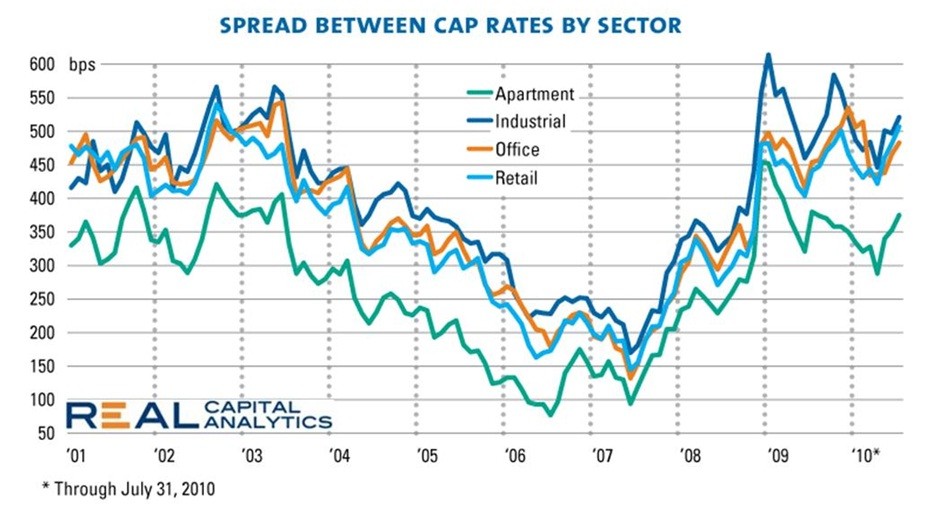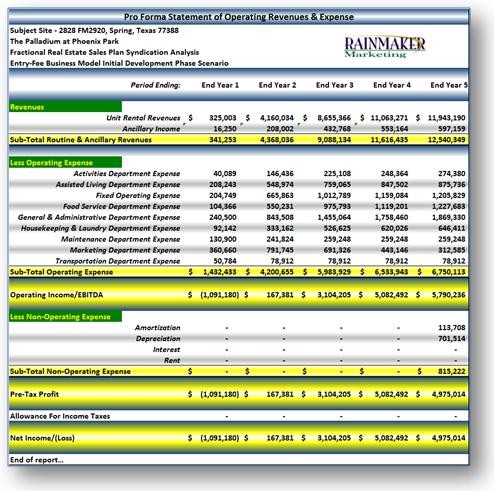Understanding Net Operating Income in Commercial Real Estate
Post on: 16 Март, 2015 No Comment

Understanding net operating income (NOI) is essential when it comes to investment commercial real estate. Without a firm grasp of net operating income, commonly referred to as just NOI, its impossible to fully understand investment real estate transactions. In this article well take a closer look at net operating income, discuss the components of NOI, and also clear up some common misconceptions.
Net Operating Income Formula
Net operating income (NOI) is simply the annual income generated by an income-producing property after taking into account all income collected from operations, and deducting all expenses incurred from operations. The net operating income formula is as follows:
Net operating income is positive when operating income exceeds gross operating expenses, and negative when operating expenses exceed gross operating income. For the purposes of real estate analysis, NOI can either be based on historical financial statement data, or instead based on forward-looking estimates for future years (also known as a proforma ).
Net operating income measures the ability of a property to produce an income stream from operation. Unlike the cash flow before tax (CFBT) figure calculated on a typical real estate proforma, the net operating income figure excludes any financing or tax costs incurred by the owner/investor. In other words, the net operating income is unique to the property, rather than the investor.
Net Operating Income and Lease Analysis
Before we go over each of the components of NOI, lets first take a quick detour into the world of commercial real estate leases. Lease analysis is the first step in analyzing any income-producing property since it identifies both the main source of income as well as who pays for which expenses. As you can see from the net operating income formula above, understanding this is essential to calculating NOI.
While there are many industry terms for different real estate leases, such as the modified gross lease. triple net lease, or the full service lease. its important to understand that these terms all have various meanings depending on who you are talking to and which part of the world you are in. Its critical to remember that you must read each individual lease in order to fully understand its structure.
At a high level, leases can be viewed on a spectrum of possible structures. On the one hand you have absolute gross leases where the owner pays all of the operating expenses related to the property. On the other hand you have absolute net leases. where the tenant is required to pay all operating expenses. Everything else falls in between these two extremes and is considered a negotiated or hybrid lease .
How to Calculate Net Operating Income (NOI)
Calculating net operating income is relatively straightforward once you break out each of the individual components. The components of net operating income consist of potential rental income, vacancy and credit losses, other income, and operating expenses.
Potential Rental Income Potential Rental Income, or just PRI, is the sum of all rents under the terms of each lease, assuming the property is 100% occupied. If the property is not 100% occupied, then a market based rent is used based on lease rates and terms of comparable properties.
Vacancy and Credit Losses - Vacancy and credit losses consist of income lost due to tenants vacating the property and/or tenants defaulting (not paying) their lease payments. For the purposes of calculating NOI, the vacancy factor can be calculated based on current lease expirations as well as market driven figures using comparable property vacancies.
Effective Rental Income - Effective rental income in the net operating income formula above is simply potential rental income less vacancy and credit losses. This is the amount of rental income that the owner can reasonably expect to collect.
Other Income A property may also collect income other than rent derived from the space tenants occupy. This is classified as Other Income, and could include billboard/signage, parking, laundry, vending, etc.
Gross Operating Income This is simply the total of all income generated from the property, after considering a reasonable vacancy and credit loss factor, as well as all other additional income generated by the property.
Operating Expenses - Operating expenses include all cash expenditures required to operate the property and command market rents. Common commercial real estate operating expenses include real estate and personal property taxes, property insurance, management fees (on or off-site), repairs and maintenance, utilities, and other miscellaneous expenses (accounting, legal, etc.).
Net Operating Income - As shown in the net operating income formula above, net operating income is the final result, which is simply gross operating income less operating expenses.
Whats Not Included in Net Operating Income
Its also important to note that there are some expenses that are typically excluded from the net operating income figure.
Debt Service - Financing costs are specific to the owner/investor and as such are not included in calculating NOI.
Depreciation - Depreciation is not an actual cash outflow, but rather an accounting entry and therefore is not included in the NOI calculation.

Income Taxes - Since income taxes are specific to the owner/investor they are also excluded from the net operating income calculation.
Tenant Improvements Tenant improvements, often abbreviated as just TI, include construction within a tenants usable space to make the space viable for the tenants specific use.
Leasing Commissions Commissions are the fees paid to real estate agents/brokers involved in leasing the space.
Reserves for Replacement - Reserves are funds set aside for major future maintenance items, such as a roof replacement, or air conditioning repair. While the textbook definitions of NOI usually exclude reserves from the NOI calculation, in practice many analysts actually do include reserves for replacement in NOI. For example, most lenders will include reserves for replacement into the NOI calculation for determining debt service coverage and the maximum loan amount. This makes sense because lenders need to understand the ability of a property to service debt, which of course has to take into account required capital expenses to keep the property competitive in the marketplace. To see how much confusion and disagreement there is on this, just take a look at all of the various answers you see here on this LinkedIn thread .
Capital Expenditures - Capital expenditures are expenses that occur irregularly for major repairs and replacements, which are usually funded by a reserve for replacement. Note that capital expenditures are major repairs and replacements, such as replacing the HVAC system in a property. This does not include minor repairs and maintenance which are considered an operating expense, such as replacing doorknobs and lightbulbs.
While many of the above items are almost always excluded from net operating income, its important to remember that some are open to interpretation depending on the context. Keep this in mind when building your own proformas and when evaluating NOI calculations performed by others.
Net Operating Income Example
The following is an example of a typical real estate proforma that would be commonly used by lenders, investors, developers, brokers and appraisers. It breaks out how net operating income is calculated and presented for an example warehouse property.
As shown above the net operating income line follows the above NOI formula by deducting vacancy and credit loss from gross potential rental income, then subtracting out all operating expenses. Also, note that the debt service and leasing commission expenses are not included in the NOI calculation.
Quick Proforma
Fill out the quick form below and we’ll email you our free proforma for calculating NOI.














